How to Roast Hatch Chiles
Learn how to roast Hatch chiles and how to store them for later use in chilis, tacos, casseroles, salsas, and more!
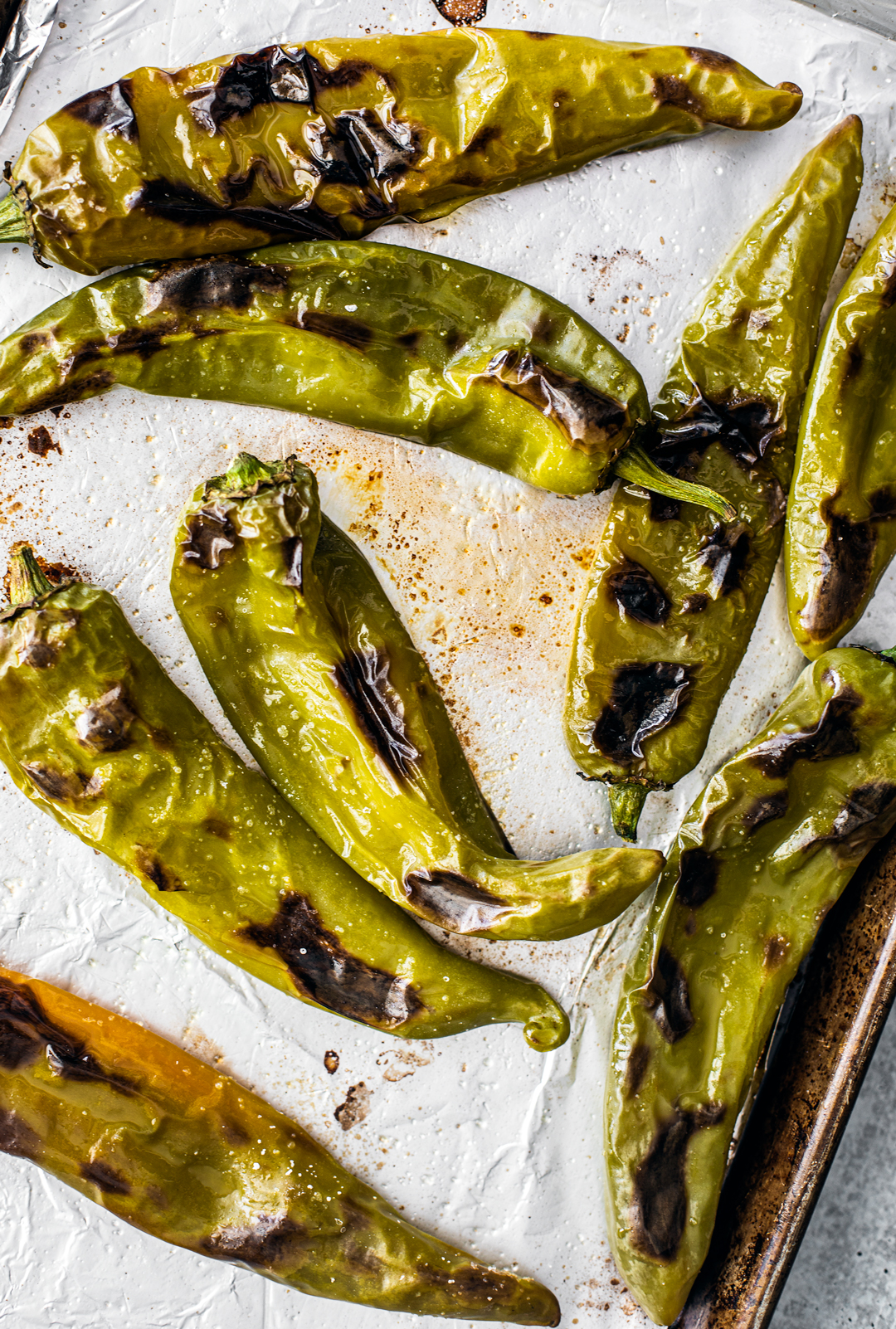
Table of Contents
It’s Hatch Season—Stock Up!
People rave about Hatch chiles, and when Hatch chile season is here, devotees are quick to stock up.
These mild and earthy peppers are perfect to have on hand for things like homemade queso, chili, tacos, and chile relleno. One of our favorite ways to enjoy hatch chiles in these dishes is roasted.
Roasting Hatch chiles brings out their natural smoky flavor and buttery texture. The best part? You can freeze them for later use!
What Is Hatch Chile?
If you’ve never had the pleasure of trying Hatch chiles for yourself, you’re probably wondering what the fuss is all about.
Hatch chiles are grown in the Hatch Valley, which is located in the Southern part of New Mexico. For a long time, the Hatch fan base didn’t sprawl much further than its home state, Texas, Arizona, and Southern California.
Luckily, the news eventually spread. The first time I’d ever heard of the Hatch chile was when I was living in North Carolina.
And now that I’m living in Pennsylvania, I’m seeing that the craze is here too. Maybe to foodies exclusively, but when the Hatch chiles hit the stands in the supermarkets here, you have to act quickly.
Hatch chile season typically kicks off in August and runs through to the end of September. But, depending on weather, the window may be extended from mid July to October.
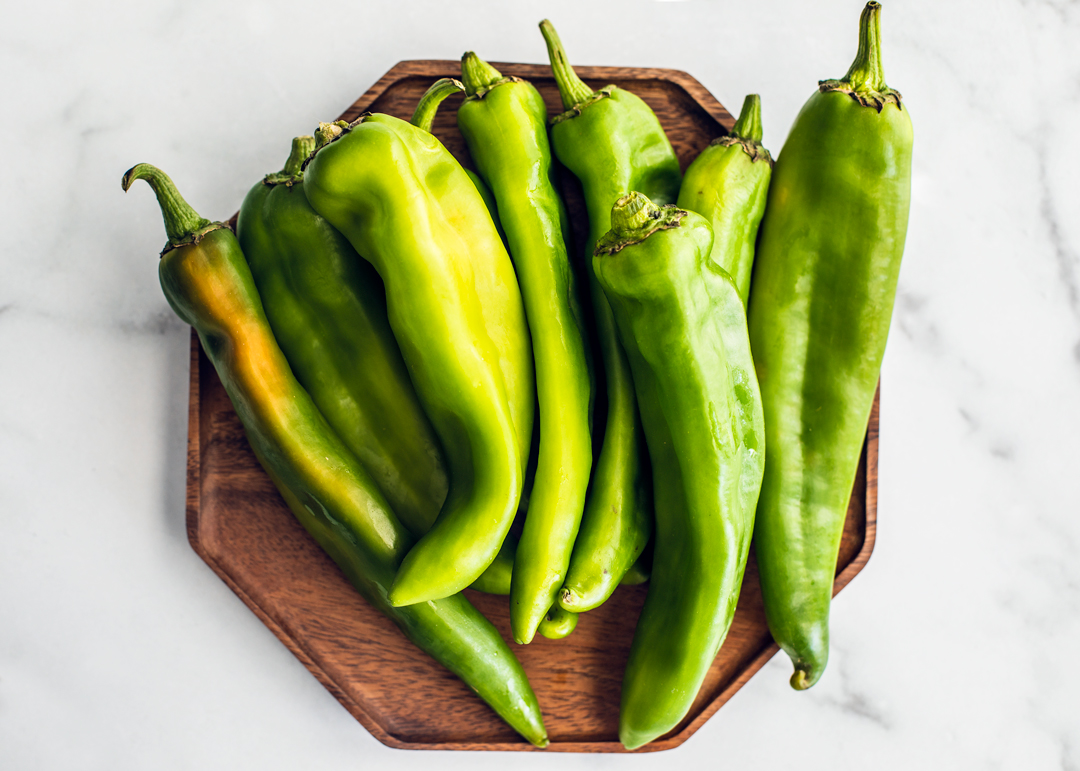
What Do Hatch Chiles Taste Like?
I’ve always found Hatch chiles to be quite earthy and aromatic, much like jalapeño. When they’re roasted, which seems to be how most love them, they offer up a rich, buttery, and smoky flavor.
To someone who doesn’t enthuse much about food, they might not see the big deal.
But for foodies and pepper lovers, there’s definitely some sort of je ne sais quoi about them.
If you know, you know.
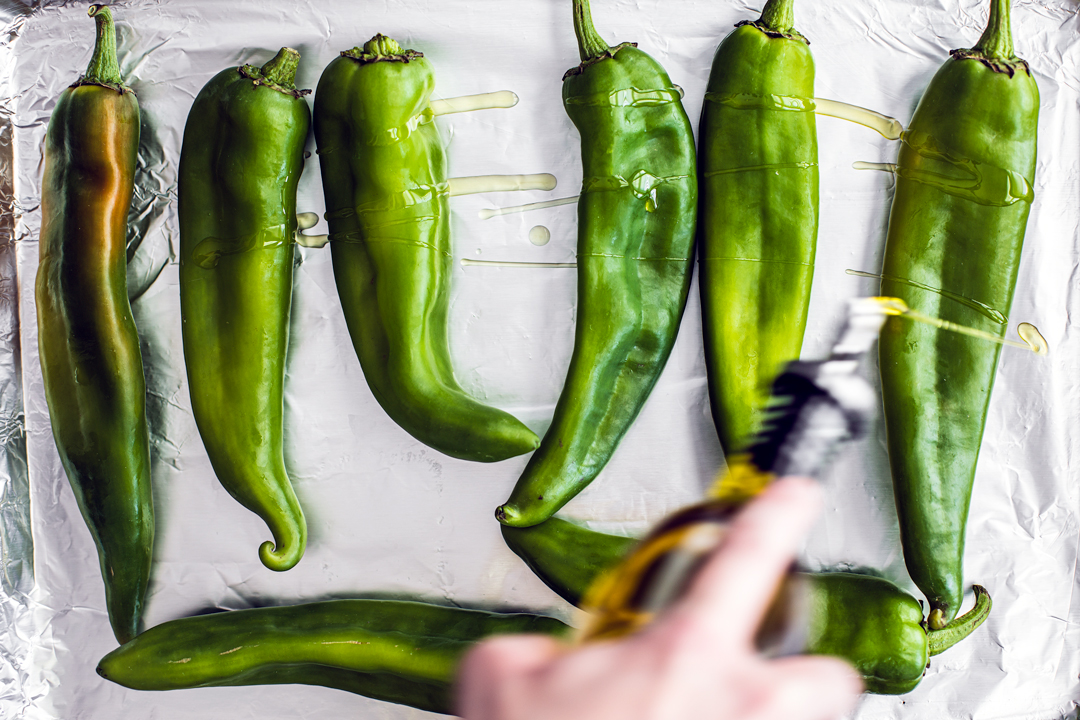
Here’s How to Roast Hatch Chiles
My go-to method for roasting Hatch chiles is to place them under the broiler; the high heat creates a nice char and blister. The char brings out that smoky flavor, and the blister makes for easy skin peeling.
- Place an oven rack to a position about 6 inches away from your broiler (should be the second or third-to-top rack in most cases.)
- Preheat the broiler.
- Cover a baking sheet with tin foil.
- Spread the chiles out over the baking sheet. Drizzle them with a just a little bit of olive oil and toss to coat.
- Place the baking sheet in the oven and broil the chiles for 5-7 minutes—or until the skin is starting to char and bubble. Then, flip them over with tongs and broil them for another 5-7 minutes.
- Once both sides of the chiles have charred, remove them from the oven and set them aside to cool.
- When the chiles have cooled, peel them and slice them open, discarding the seeds.
- Roughly chop the chiles and store them in the fridge within two hours.
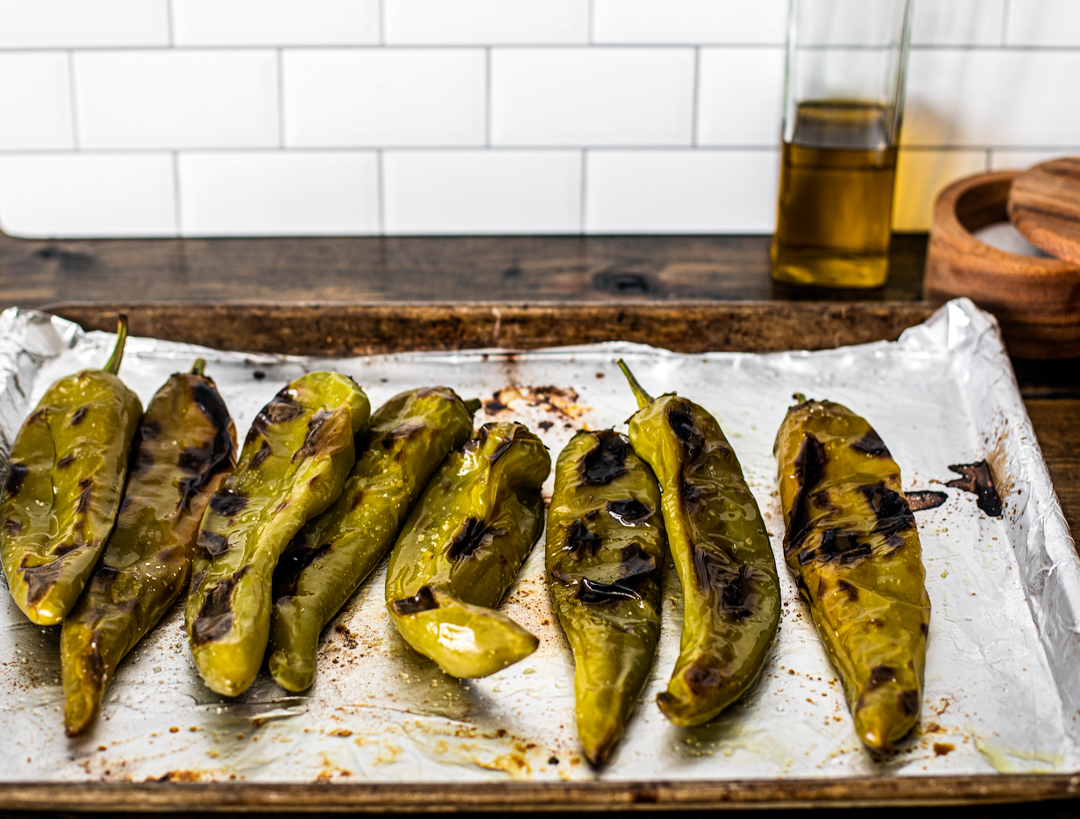
Useful Tools for Roasting Hatch Chiles
Tips for Storing and Freezing Hatch Chiles
- Roasted and peeled peppers should be refrigerated within two hours after being cooked.
- You can cover the roasted chiles right after they come out of the oven to steam them a bit, which makes the peeling process a little easier—though I’ve always had an easy time without doing this.
- Chiles should be completely cooled before freezing. If the peppers are placed in the freezer while still warm, bacteria may grow and become dormant during storage.
- Use shallow containers. If containers are too big, the peppers will freeze slowly and develop an ice crystal formation within the pepper tissue which results in a mushy texture.
- Whole peppers can be frozen un-peeled—they’re actually easier to peel after having been frozen.
- After thawing, hatch chiles kick it up one full heat level.
- Hatch chiles can be stored in the freezer for up to a year; in the fridge, they’re good for about three days.
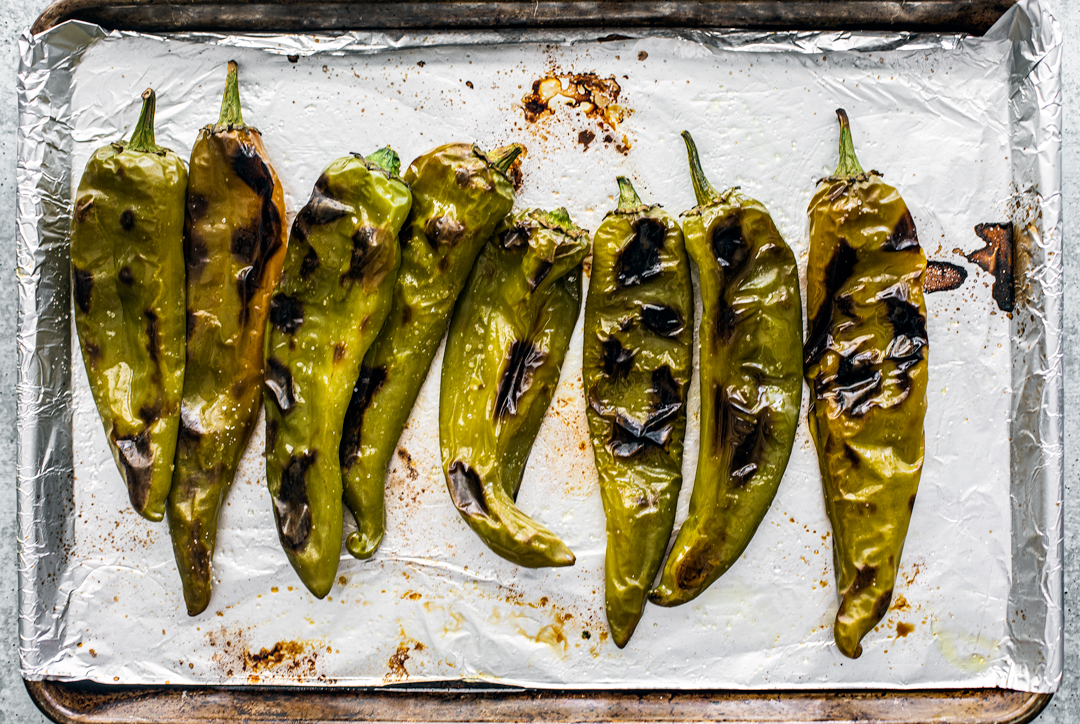
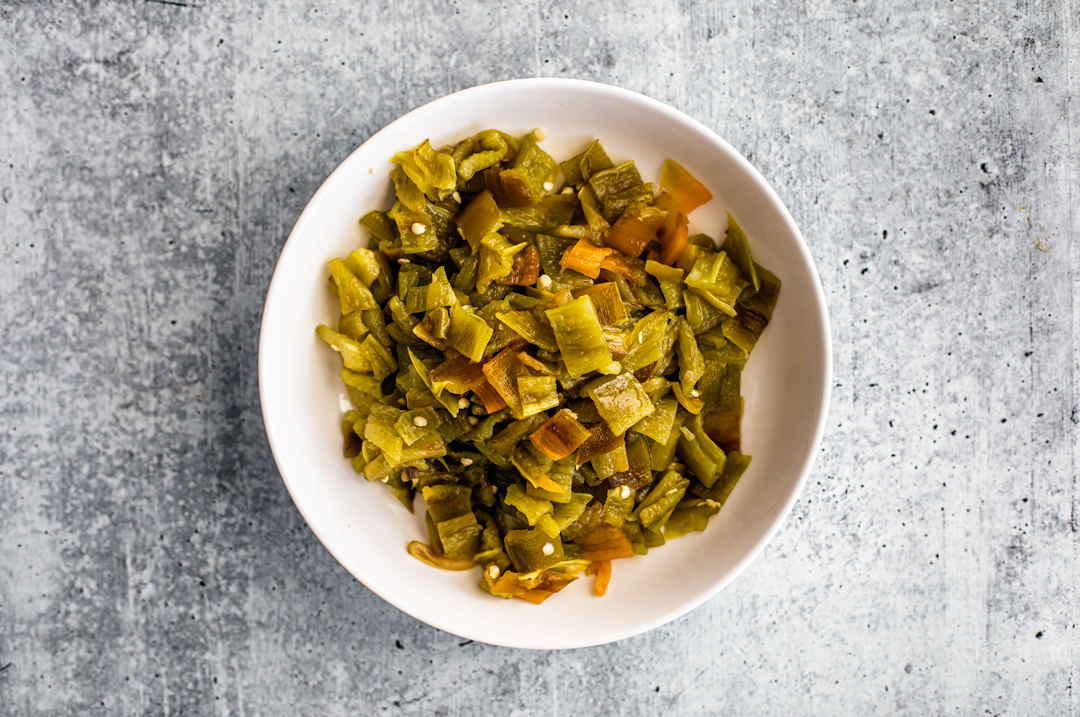
How Can I Use Hatch Chiles?
Roasted Hatch chiles are the perfect addition to chili, tacos, stews, salsa, queso, and more. Here are some recipes you can try them in:
- Roasted Hatch Chiles Grilled Cheese
- Instant Pot Ground Turkey Tacos
- Instant Pot Mexican Rice
- Healthy Breakfast Tacos with Black Beans and Eggs
- Instant Pot Chipotle Chicken Tacos
Was This Helpful?
If you enjoyed this post, please consider leaving a STAR rating & commenting below with feedback!
You can also show off your creations on Instagram by tagging @killing__thyme
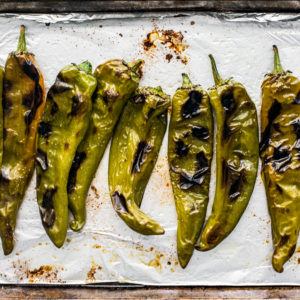
How to Roast Hatch Chiles
Ingredients
- Hatch chiles
- Olive oil
Instructions
- Position your oven rack to about 6 inches away from your broiler.
- Preheat the broiler. While it preheats, cover a baking sheet with tin foil.
- Spread the chiles out over the baking sheet and hit them with a drizzle of olive oil; toss to coat them evenly.
- Pop the baking sheet into the oven and broil the chiles for 5-7 minutes—or until the skin is starting to char and bubble. Then, carefully with tongs, flip them over and broil for another 5-7 minutes. When both sides of the chiles are charred, take them out of the oven. Set them aside and let them cool before handling.
- Once the chiles have cooled down, peel them and slice them open; discard the seeds. Roughly chop the chiles and store them in the fridge within two hours.
Notes
Tips for storing and freezing Hatch chiles.
- Roasted and peeled peppers should be refrigerated within two hours after being cooked.
- You can cover the roasted chiles right after they come out of the oven to steam them a bit, which makes the peeling process a little easier—though I’ve always had an easy time without doing this.
- Chiles should be completely cooled before freezing. If the peppers are placed in the freezer while still warm, bacteria may grow and become dormant during storage.
- Use shallow containers. If containers are too big, the peppers will freeze slowly and develop an ice crystal formation within the pepper tissue which results in a mushy texture.
- Whole peppers can be frozen unpeeled—they’re actually easier to peel after having been frozen.
- After thawing, hatch chiles kick it up one full heat level.
- Hatch chiles can be stored in the freezer for up to a year; in the fridge, they’re good for about three days.

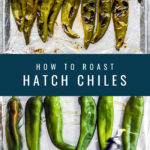


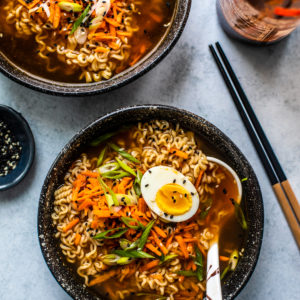

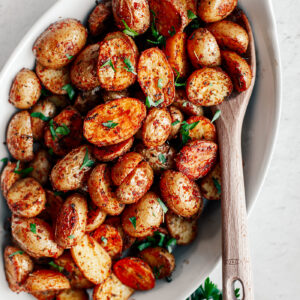

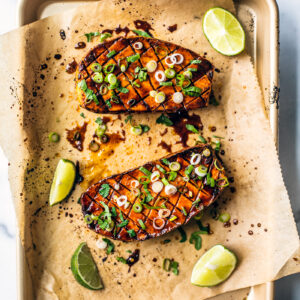



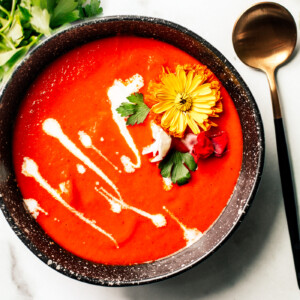
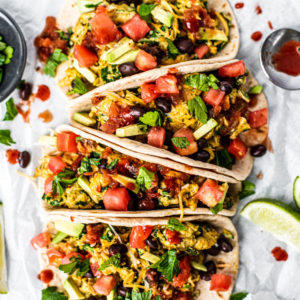

23 Comments on “How to Roast Hatch Chiles”
Thanks for the guide! I make a good chili for my tacos and these were a great addition to it!
Thanks for this – really useful, clear information.
This is awesome. I love roasted Hatch chiles. They have a nice, mellow flavor that’s still a bit hot. I’ve never tried roasting them myself before.
I love hatch chiles but only have them at restaurants. Can’t wait to try roasting my own at home!
You’ll love it, Tayler!
This is so helpful. Thanks for sharing!
No problem!
What a great idea to make ahead and store. I cook with chili’s all the time. Love the tips and tricks on this recipe. Thanks so much for sharing.
You’re so welcome!
Hatch chiles are always so much better when they’re roasted in my opinion. The flavor is so rich.
Oh yeah, 100% with you on that, Beth.
I’m so happy I came across this recipe during Hatch chile season! I adore the smoky earthy flavour I got from roasting them, it makes the best salsa!
It truly does! Glad you found this post too, Adri!
This was such a helpful guide to roasting hatch chilis perfectly every time! Thank you so much!
I’m glad! You’re very welcome, Anjali.
This was so timely! My local grocery store has hatch chilies on sale, so I picked some up and tried to roast them. Your instructions made it so easy for me to do. Thank you!
I’m so glad! I’ve experienced both scenarios: stores that sell them fresh and stores that sell them roasted and ready to go. Which is super convenient. But I’m kind of a sucker for roasting things on my own—I love how the aroma wafts through the entire house. Haha.
OMG these were delicious. Super easy. We tossed some in with our salsa right away and froze the rest for tacos later! Cant wait to enjoy them again!
I’m so glad! I ended up freezing a bunch, too. I see a Hatch chile queso happening in my house this fall…
This was such a quick and easy recipe that does not disappoint! Quick, easy and delicious; adds the perfect amount of flavor to just about any dish!
Yes, we add these to so many things! Glad you had fun with the process :)
Very useful post on how to roast hatch chile. Thanks for sharing.
You’re welcome!